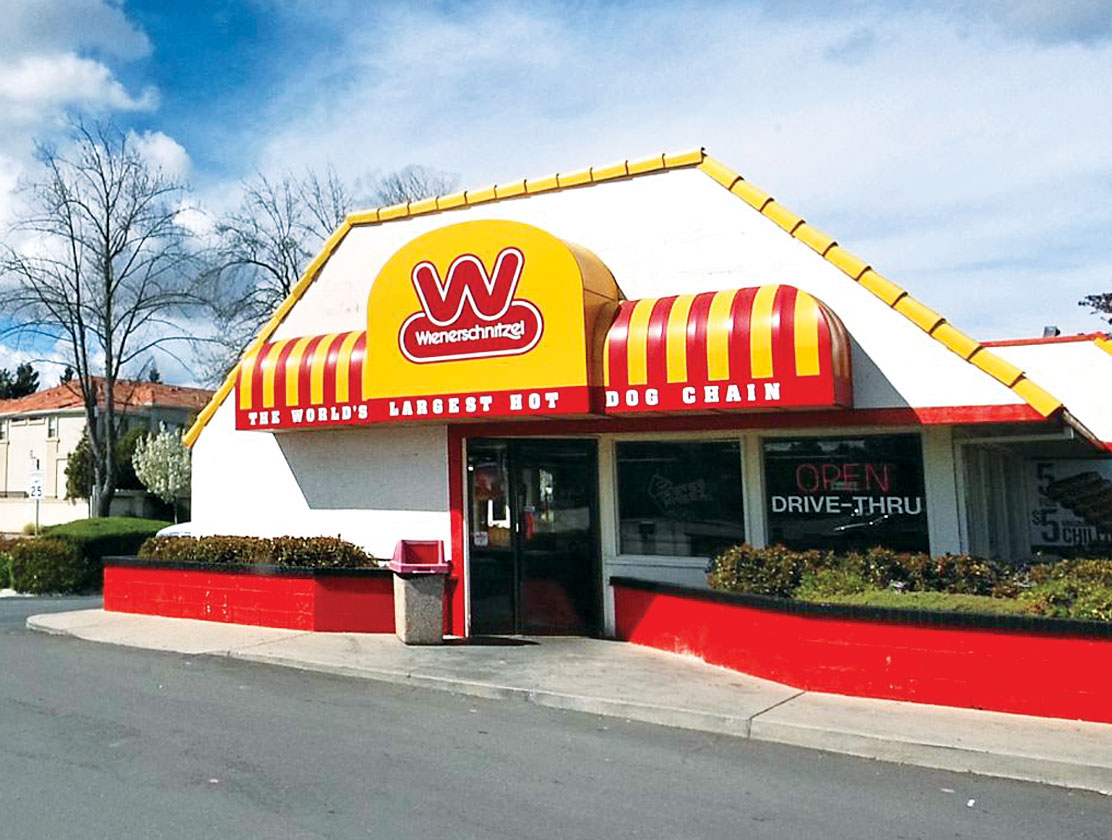Wienerschnitzel is emerging from the pandemic with more optimism than ever.
The brand last year signed a 15-unit deal in Ecuador, which marked the first step in its international expansion.
It’s a big leap for parent company Galardi Group, which operates and franchises nearly 350 Wienerschnitzel restaurants, plus 13 Hamburger Stand units, and a handful of Tastee Freeze stores. Expanding the brand outside of the U.S. comes with a host of challenges. The hot dog is an established daypart stateside, but that isn’t the case in international markets.
In an episode of QSR Uncut, COO Rusty Bills says charting Wienerschnitzel’s path into new waters will require some creativity.
“We’ve got different issues internationally with the product,” he says. “Proteins matter … We have a dog that has three different proteins from pork, poultry, and beef. If you’re going to launch in the Middle East, you’ve got to change that.”
The brand also is ramping up its domestic expansion following a series of pandemic-related delays. New stores are coming to Arkansas, Idaho, Nebraska, Texas, and Washington.
Wienerschnitzel has seven different prototypes and sub-options on each of those. The kitchens aren’t standardized, which has caused some headaches when it comes to equipment rollouts and operational efficiencies.
“That’s why we’ve gotten into this new realm of elevating our buildings and working with architects to launch a sleeker design that keeps that A-frame nostalgia to it,” Bills says. “We don’t want to lose that.”
The brand’s original A-frame design features a drive-thru where cars move through the building. It still has more than 90 of those locations. A third of its system doesn’t have a dining room, a fact that helped it deliver record sales amid a period of industry-wide disruption.
READ MORE: Wienerschnitzel’s Legacy is in Good Hands with CEO J.R. Galardi
Wienerschnitzel has been catering to motor traffic for six decades and was well-positioned for the drive-thru-centric world ushered in by the pandemic. Sales skyrocketed in 2020, and the brand has managed to maintain its trajectory in the face of challenging comps. Key to its success has been meeting the moment head on, instead of waiting for a return to “whatever people perceive as normal,” Bills says.
“We’ve eliminated most of the prep,” he says. “We’ve streamlined a lot of our processes of how we cook things… and we’re going to fine-tune that even more. How efficient can we be at the lowest common denominator? We don’t want to remove employees and create robots. We just want to be as efficient and as profitable as we can.”
Wienerschnitzel may not be looking to replace humans with robots, but it is monitoring and evaluating several AI drive-thru companies. Bills has been keeping a close eye on competitors that are experimenting with voice ordering technology. He doesn’t think AI systems are seamless yet, and he isn’t concerned with being an early adopter. But he does see a significant opportunity to modernize the 62-year-old chain’s operations.
For Bills, AI-powered restaurant technology is less about replacing labor than it is reallocating labor. That’s important when you don’t have the volumes to have two or three employees working the drive-thru.
“One person is taking the orders, tendering orders, bagging orders, repeating them, making desserts and drinks, and giving it to the consumers,” Bills says. “What we’re trying to do is get this AI to take that order and to spend the proper amount of time with the customers.”
The biggest benefit could be freeing up employees to focus on the aspects of the customer experience that require a human touch.
“If you execute friendliness, taste of food, and timeliness, all of the sudden, the cleanliness, the image, and all of that stuff doesn’t matter,” Bills says. “If you engage in a couple of factors, it makes everything else look better.”








